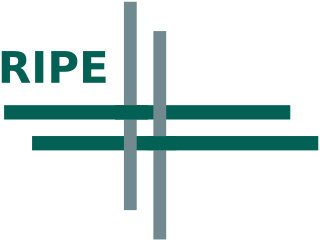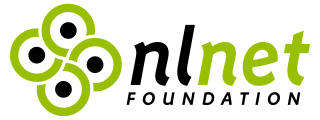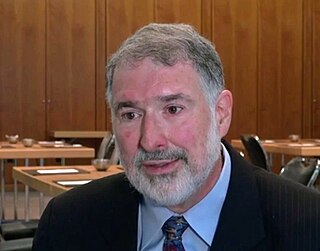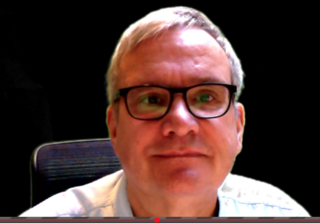
The history of the Internet has its origin in the efforts of scientists and engineers to build and interconnect computer networks. The Internet Protocol Suite, the set of rules used to communicate between networks and devices on the Internet, arose from research and development in the United States and involved international collaboration, particularly with researchers in the United Kingdom and France.
The Internet protocol suite, commonly known as TCP/IP, is a framework for organizing the set of communication protocols used in the Internet and similar computer networks according to functional criteria. The foundational protocols in the suite are the Transmission Control Protocol (TCP), the User Datagram Protocol (UDP), and the Internet Protocol (IP). Early versions of this networking model were known as the Department of Defense (DoD) model because the research and development were funded by the United States Department of Defense through DARPA.

Kremvax was originally a fictitious Usenet site at the Kremlin, named like the then large number of Usenet VAXen with names of the form foovax. Kremvax was announced on April 1, 1984, in a posting ostensibly originated there by Soviet leader Konstantin Chernenko. The posting was actually forged by Piet Beertema of CWI as an April Fool's prank—"because the notion that Usenet might ever penetrate the Iron Curtain seemed so totally absurd at the time".
The National Science Foundation Network (NSFNET) was a program of coordinated, evolving projects sponsored by the National Science Foundation (NSF) from 1985 to 1995 to promote advanced research and education networking in the United States. The program created several nationwide backbone computer networks in support of these initiatives. Initially created to link researchers to the NSF-funded supercomputing centers, through further public funding and private industry partnerships it developed into a major part of the Internet backbone.

Réseaux IP Européens is a forum open to all parties with an interest in the technical development of the Internet. The RIPE community's objective is to ensure that the administrative and technical coordination necessary to maintain and develop the Internet continues. It is not a standards body like the Internet Engineering Task Force (IETF) and does not deal with domain names like ICANN.
UUCP is a suite of computer programs and protocols allowing remote execution of commands and transfer of files, email and netnews between computers.
The Centrum Wiskunde & Informatica is a research centre in the field of mathematics and theoretical computer science. It is part of the institutes organization of the Dutch Research Council (NWO) and is located at the Amsterdam Science Park. This institute is famous as the creation site of the programming language Python. It was a founding member of the European Research Consortium for Informatics and Mathematics (ERCIM).

The NLnet Foundation supports organizations and people that contribute to an open information society. It was influential in spreading the Internet throughout Europe in the 1980s. In 1997, the foundation sold off its commercial networking operations to UUNET, resulting in an endowment with which it makes grants.

John S. Quarterman is an American author and longtime Internet participant. He wrote one of the classic books about networking prior to the commercialization of the Internet. He has also written about risk management.

KPNQwest was a telecommunications company equally owned by the Dutch national telecom operator KPN and Qwest Communications International Inc., the Internet communications company, headquartered in Denver, Colorado.

Glenn Ricart is a computer scientist. He was influential in the development of the Internet (ARPANET) going back to 1969 and early implementation of the TCP/IP protocol. Since then he has been active in technology and business as well as donating his time to philanthropic and educational movements.

Stephen South Wolff is one of the many fathers of the Internet. He is mainly credited with turning the Internet from a government project into something that proved to have scholarly and commercial interest for the rest of the world. Dr. Wolff realized before most the potential in the Internet and began selling the idea that the Internet could have a profound effect on both the commercial and academic world.
XLINK originally was the eXterne Lokale Informatik-Netz Karlsruhe.
Piet Beertema is a Dutch Internet pioneer. On November 17, 1988, at 2:28 PM, he linked the Netherlands as one of the first two countries to NSFNET, a precursor to the Internet. Beertema was then working as an administrator at the Centrum Wiskunde & Informatica (CWI) in Amsterdam.

François Flückiger is a French computer scientist who worked at CERN. He was selected for induction in 2013 in the Internet Hall of Fame.
The history of email entails an evolving set of technologies and standards that culminated in the email systems in use today.

Daniel Karrenberg is a German computer scientist and one of Europe's Internet pioneer who lives in the Netherlands.

Teus Hagen is a Dutch Internet pioneer.
A long-running debate in computer science known as the Protocol Wars occurred from the 1970s to the 1990s, when engineers, organizations and nations became polarized over the issue of which communication protocol would result in the best and most robust computer networks. This culminated in the Internet–OSI Standards War in the 1980s and early 1990s, which was ultimately "won" by the Internet protocol suite (TCP/IP) by the mid-1990s and has since resulted in most of the competing protocols disappearing.











